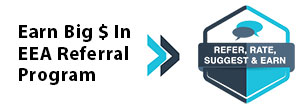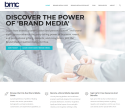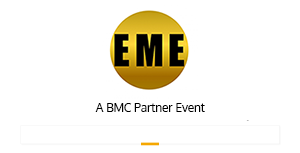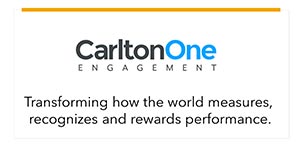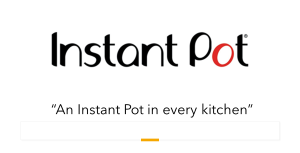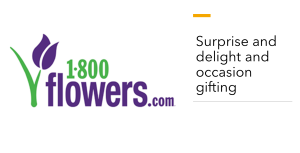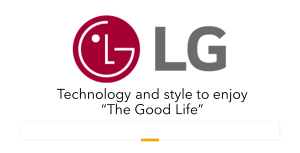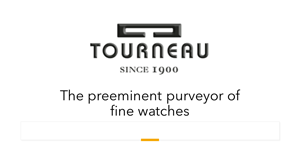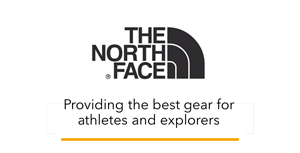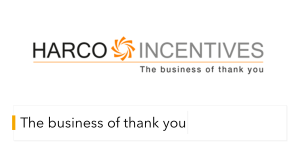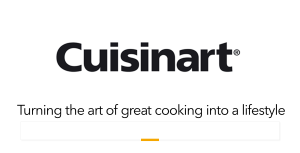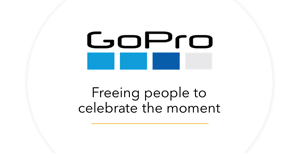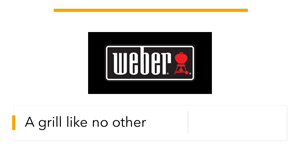Bonusly CEO: Analytics Will Be a Differentiator in Recognition
 series B investment--believes that the recognition field is in the early stages of a significant transformation toward focusing on enhanced workforce management.
series B investment--believes that the recognition field is in the early stages of a significant transformation toward focusing on enhanced workforce management.Recognition is in the Early Innings of a New Game
A Fast-Changing Marketplace
Unlocking the Power of Employee Insights Through Recognition
 Most of the recognition technology companies that have raised venture capital or private equity funds emphasize rewards, recognition and employee engagement. In his explanation of the company he founded, Bonusly, Raphael Crawford-Marks emphasizes the ability to gain invaluable real-time performance and activity data for better people management. The company recently announced that it raised $18.9 million in Series B funding led by Ankona Capital with participation from Access Venture Partners, Next Frontier Capital and FirstMark Capital — bringing its total raised to $32.4 million. Much of the latest proceeds, Crawford-Marks says, will be invested in enhanced business analytics to help organizations make better decisions to enhance retention, referrals, productivity, quality, and other organizational goals.
Most of the recognition technology companies that have raised venture capital or private equity funds emphasize rewards, recognition and employee engagement. In his explanation of the company he founded, Bonusly, Raphael Crawford-Marks emphasizes the ability to gain invaluable real-time performance and activity data for better people management. The company recently announced that it raised $18.9 million in Series B funding led by Ankona Capital with participation from Access Venture Partners, Next Frontier Capital and FirstMark Capital — bringing its total raised to $32.4 million. Much of the latest proceeds, Crawford-Marks says, will be invested in enhanced business analytics to help organizations make better decisions to enhance retention, referrals, productivity, quality, and other organizational goals.Bonusly positions itself as “the operating system for high-performing, highly engaged teams,” explains Crawford-Marks in a recent interview. “The benefit that companies realize from using Bonusly is greater productivity, retention, and referrals. They are better able to identify and retain their top performers, and that is a critical importance to all companies today regardless of the industry.”
As a result, Crawfork-Marks says, “We are making a lot of investments to clearly separate ourselves from the pack in the employee recognition space by layering a suite of people analytics tools on top of the recognition data set that is created by any employee population on a recognition platform. Those analytics can drive a lot of second-order value for companies by enabling them to get visibility into departments and teams and even into individuals that they couldn't have accomplished before. We are helping them benchmark their companies’ performance against peer companies by industry or size, and we’re just at the beginning.” Crawford-Marks believes his company already “is a lot further ahead than any other company in the recognition field in the area of analytics, and that's where a lot of our new investment will be directed.”
Recognition is in the Early Innings of a New Game
Even though the recognition field has existed for decades, Crawford-Marks believes “we’re in the early innings of the game. For one, most companies are either not doing anything with respect to employee engagement or they are just doing something ad hoc, which could be a drawer full of gift cards they hand out on employees’ birthdays. Most companies out there are doing nothing or something very ad hoc and haven’t really thought strategically about what the evidence says about their organizations; how they can improve employee engagement; how they can improve employee retention and productivity. That means first coming up with a strategy for what’s going to unlock the full potential of your people. Everything we do, not just with our technology but also with what we write in our blogs and white papers, is meant to help companies adopt that more strategic outlook of starting to think of their people in terms of what is going to make the difference in business outcomes.”
Is this shift to a more strategic thinking probable? “When I first started getting on the phone with vice presidents of human resources a decade ago, they would laugh at the idea of employees being empowered to give recognition to each other. Some would laugh and say that would never work. Some of those same VPs of HR are now Bonusly customers. In the same way, there is still a lot of green field in the area of strategic thinking and metrics.”
He believes the business world suffers from “a legacy of a corporate culture that until very recently viewed employees as little more than coin-operated machines. The company would say, ‘I’m paying a market rate, competitive wage and that should be enough. I shouldn't have to think about employee recognition or employee psychology or employee morale at all. They are coin-operated machines; we give them coins; they should do what we ask them to do. There's a lot of organizational psychology that says that this view is wrong, but it was still the dominant corporate view. Metrics are critical because at the end of the day, company leaders care about the bottom line; they care about their companies’ growth. They care about hitting their organizational goals. So, everything does have to be eventually tied back to and defined in those terms for them.”
Unlocking the Power of Employee Insights Through Recognition
Crawford-Marks’ roots are in technology, not recognition or sales, he says. “I got my start at the dawn of the internet age. Everywhere I worked I saw that people were the key competitive resource for companies and that business outcomes were largely determined by the degree to which organizations could attract, develop, and retain employees and help them form into highly productive teams.” It became clear to him that “it is the workers of a company who know who is doing what and contribute which strengths to the workplace, and all the small daily wins that eventually add up to the big visible win. And all that information is locked up in their heads inaccessible to companies who could really use that information to make better decisions about their people. At the same time, I saw employees quitting in droves because they were feeling under appreciated.” Properly designed recognition programs, he believes, help management better visualize the people who truly are contributing to the organization as well as address the need for expressing meaningful gratitude.
Bonusly was largely developed as a part-time project of Crawford-Marks over a three-year period in its early years and was bootstrapped before raising its first round of funding. Its first customers, he says, “were smaller companies that would use Bonusly on their own on a self-service basis. The great thing about that is it forced us to create a great user experience and rapidly deliver value to companies. From the moment they signed up, we had to show them how the platform could make a difference for them. That forced us to create a truly impactful product that could change behavior very quickly across the organization.” From there, the company moved upmarket and now serves companies with ten to tens of thousands of employees, he adds.
Bootstrapped for several years, Crawford-Marks says the company used content marketing strategies to find and build relations with clients, publishing a blog and articles on employee engagement and recognition. Over the years it created such tools as:
- Cost of turnover calculator
- Guide to building resilient teams
- Guide to employee recognition
- 2023 HR checklist to retain top talent
A Fast-Changing Marketplace
Crawford-Marks says “the market is changing a lot right now, because the early adopters of recognition software were high-tech and high-growth companies that are really feeling the squeeze right now. On the other hand, “there are a lot of more traditional brick-and-mortar industries that are still feeling intense pressure to attract, develop, and retain talent by better engaging employees. We're focusing on bringing our story to manufacturing, retail health care, veterinary, food service, hospitality and other industries that are still feeling this big talent crunch and understand very well the high cost of turnover.”
Today, the company’s target market are organizations with fewer than 1,000 employees to enterprise companies with up to 10,000, he says.
Program design and implementation are critical to success, Crawford-Marks agrees, and says that the company is investing in enhanced customer onboarding and program design support to ensure client success. That said, the company does not envisage at this time creating a professional services division charging advisory fees, but for now at least will continue to build support into the SaaS fees for technology and other sources of revenue.
For rewards and recognition, Crawford-Marks believes in a combination of frequency that comes with no-cost expressions of appreciation through the company’s social platform along with points that can be redeemed for gift cards, other gifts, or charitable donations. “When people are given cash as recognition, it is almost instantly forgotten,” he points out. “But when they are able to choose a reward of the same value for themselves, the salience of that in their memory is orders of magnitude higher in terms of long-term recall. So, what we try to do is create a catalog of rewards that includes gift cards, experiences, charitable donations, those that are meaningful to employees. That can include custom items, including customized swag. The key is for employees to find a reward option that is personally meaningful to them because that maximizes the impact on the recipient for which the company is spending the money."
For More Information
Raphael Crawford-Marks
Bonus.ly
raphael@bonus.ly
Subscribe to RRN’s weekly e-newsletter.
Profit From the “S” of Environmental, Social, Governance (ESG)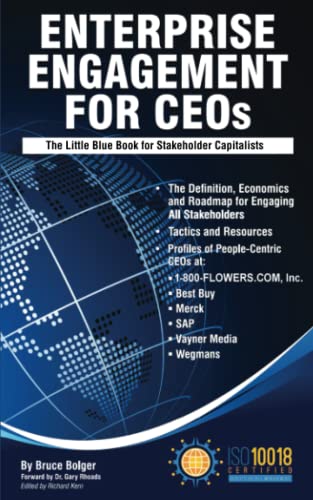
Through education, media, business development, advisory services, and outreach, the Enterprise Engagement Alliance supports boards, business analysts, the C-suite, management in finance, marketing, sales, human resources and operations, etc., educators, students and engagement solution providers seeking a competitive advantage by implementing a strategic and systematic approach to stakeholder engagement across the enterprise. Click here for details on all EEA and RRN media services.
1. Professional Education on Stakeholder Management and Total Rewards
Strategic Business Development for Stakeholder Management and Total Rewards solution providers, including Integrated blog, social media, and e-newsletter campaigns managed by content marketing experts.
4. Advisory Services for Organizations
Stakeholder Management Business Plans; Human Capital Management, Metrics, and Reporting for organizations, including ISO human capital certifications, and services for solution providers.
5. Outreach in the US and Around the World on Stakeholder Management and Total Rewards
The EEA promotes a strategic approach to people management and total rewards through its e-newsletters, web sites, and social media reaching 20,000 professionals a month and through other activities, such as:

Through education, media, business development, advisory services, and outreach, the Enterprise Engagement Alliance supports boards, business analysts, the C-suite, management in finance, marketing, sales, human resources and operations, etc., educators, students and engagement solution providers seeking a competitive advantage by implementing a strategic and systematic approach to stakeholder engagement across the enterprise. Click here for details on all EEA and RRN media services.
1. Professional Education on Stakeholder Management and Total Rewards
- Become part of the EEA as an individual, corporation, or solution provider to gain access to valuable learning, thought leadership, and marketing resources.
- The only education and certification program focusing on Stakeholder Engagement and Human Capital metrics and reporting, featuring seven members-only training videos that provide preparation for certification in Enterprise Engagement.
-
EEA books: Paid EEA participants receive Enterprise Engagement for CEOs: The Little Blue Book for People-
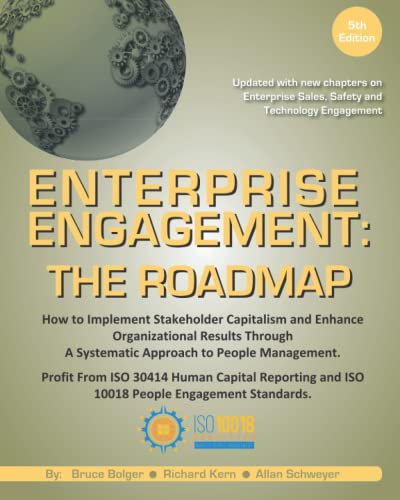 Centric Capitalists, a quick implementation guide for CEOs; Enterprise Engagement: The Roadmap 5th Edition implementation guide; a comprehensive textbook for practitioners, academics, and students, plus four books on theory and implementation from leaders in Stakeholder Management, Finance, Human Capital Management, and Culture.
Centric Capitalists, a quick implementation guide for CEOs; Enterprise Engagement: The Roadmap 5th Edition implementation guide; a comprehensive textbook for practitioners, academics, and students, plus four books on theory and implementation from leaders in Stakeholder Management, Finance, Human Capital Management, and Culture.
- ESM at EnterpriseEngagement.org, EEXAdvisors.com marketplace, ESM e–newsletters, and library.
- RRN at RewardsRecognitionNetwork.com; BrandMediaCoalition.com marketplace, RRN e-newsletters, and library.
- EEA YouTube Channel with over three dozen how-to and insight videos and growing with nearly 100 expert guests.
Strategic Business Development for Stakeholder Management and Total Rewards solution providers, including Integrated blog, social media, and e-newsletter campaigns managed by content marketing experts.
4. Advisory Services for Organizations
Stakeholder Management Business Plans; Human Capital Management, Metrics, and Reporting for organizations, including ISO human capital certifications, and services for solution providers.
5. Outreach in the US and Around the World on Stakeholder Management and Total Rewards
The EEA promotes a strategic approach to people management and total rewards through its e-newsletters, web sites, and social media reaching 20,000 professionals a month and through other activities, such as:
- Association of National Advertisers Brand Engagement 360 Knowledge Center to educate brands and agencies.
- The EEA Engagement widget to promote, track, and measure customers/employee referrals and suggestions that can be connected to any rewards or front-end program management technology.
- The Stakeholder Capitalism free insignia to promote a commitment to better business.
- The BMC Brand Club and transactional storefronts to educate corporate and agency buyers on the IRR market.
- The EME Gold program to educate the top 3% of promotional consultants on selling engagement and rewards services.

.jpg)
